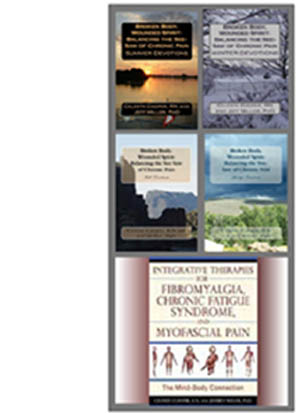 |
| Courtesy Pexels.com |
Last year I wrote about the importance of critical
thinking and problem solving and casting
a light on recurring theories. This year, I decided to kick off a review of
the research beginning with a look at exercise and fibromyalgia.
In my 2015 blog, I asked "Can
Aerobic Exercise Reduce Fibromyalgia Symptoms?" As I said, the answer
is tricky because there is evidence that aerobic exercise can reduce symptoms, and there is evidence to suggest it can increase symptoms. So, maybe we should look at the evidence on different
types of exercise, like warm water (aquatic) exercise, yoga and stretching, and
aerobic exercise vs. tai chi.
AQUATIC
EXERCISE
Using assessment
parameters we usually see when studying fibromyalgia, researchers (2008) looked
at the effectiveness of
aquatic (warm water) therapy compared to home based exercise therapy. They found that both aquatic therapy and
home-based exercise programs have beneficial effects. However, when considering
pain management, only aquatic therapy had longer lasting effects. And, a 2015 study revealed
that a pool-based aquatic aerobic exercise program was the most effective
treatment when compared to isometric strength-stretching and aerobic exercise. So,
can we conclude aquatic therapy is good for fibromyalgia, maybe not?
In 2014, Bidonde J, et al. concluded
that there is low to moderate quality evidence to suggest that aquatic training
is beneficial. And “very low to low quality evidence suggests that there are
benefits of aquatic and land-based exercise, except in muscle strength (very
low quality evidence favoring land)”. What are we to think?
Ai
Chi = The use of breathing techniques and progressive resistance training in
water to relax and strengthen the body, based on elements of qigong and Tai chi
chuan.
I personally found aquatic therapy made my myofascial pain syndrome pain much worse. Enter Ai Chi. Knowing my past experience, my physical therapist encouraged me try Ai Chi. Trusting in him, I did. It is very
different and I liked it. So, it comes as no surprise to me that a 2016 pilot study
found “significant differences in values such as pain perception, vitality,
mental health, as well as perceived overall improvement in quality of life”. This new approach (Ai Chi),
rather than aquatic strength training, may make a difference in the benefits of
warm water therapies.
RESISTANCE
EXERCISE
Research on resistance training
(isometrics, weight training, etc.) is reported by the experts to be of low
quality, so I am not entertaining it here.
STRETCHING
AND YOGA
A 2014 Brazilian review,
Effects
of muscle stretching exercises in the treatment of fibromyalgia, found significant
improvement in all studies regarding pain and quality of life. However, they
concluded that even though it is clear that muscle stretching for fibromyalgia
is important, there is a need for further studies because of the low quality of
methods used and the lack of standardization for comparative analysis. This
makes it difficult to know if a certain stretching technique is better.
What about yoga?
A 2011 pilot study suggests
a protocol for managing fibromyalgia with yoga and meditation. While they do
report positive responses, there were only 11 participants.
 |
| Courtesy Pexels.com |
Side note: I do a few gentle flowing yoga poses as a warm up to tai chi. If my chest feels restricted, I get right to breathing through the child’s pose. Tree pose is my barometer for knowing when I need to work on balance before I do something stupid, like fall over for no reason, or sling my arms into walls, what I call in our BIG book, the “Bull in the China Cabinet Effect.” I have learned that holding postures will activate trigger points and cause mind-altering pain. But, stretching can feel so good; and when it’s done right, it should.
A small 2017 mindful yoga pilot study found fibromyalgia symptoms and functional deficits improved significantly, as did physical tests of strength and balance, and pain coping strategies. These findings indicate that further investigation is warranted into the effect of Mindful Yoga on neurobiological pain processing.”
AEROBIC
EXERCISE vs. TAI CHI
Aerobic exercise is often suggested as a first line treatment for fibromyalgia. However, as recently as 2017 that
could change. In a review, researchers report those
of us with fibro may see little to no difference in our pain and physical function
from aerobic exercise. Quote, “We downgraded the evidence owing to the small
number of included trials and participants across trials, and because of issues
related to unclear and high risks of bias (performance, selection, and
detection biases). Aerobic exercise appears to be well tolerated (similar
withdrawal rates across groups), although evidence on adverse events is scarce,
so we are uncertain about its safety.” There is some research to suggest the way our body responds to exertional
demands could play a role in our intolerance to aerobic exercise, such as
running, biking, or other physical activities that increase our heart rate.
 |
| Balancing Rocks-Celeste's Photography |
It’s important for anyone with chronic
pain to keep moving. And, when it comes to fibromyalgia, it appears the positive
results are more likely if the practice
of mindfulness is included with exercise.
Additional Reading:
Celeste Cooper, RN / Author, Freelancer, Advocate
Think adversity?-See opportunity!
~ • ~ • ~ • ~ • ~ • ~
Learn more about
Celeste’s books here. Subscribe
to posts by using the information in the upper right hand corner or use the
share buttons to share with others.











No comments:
Post a Comment